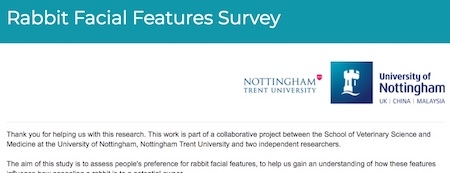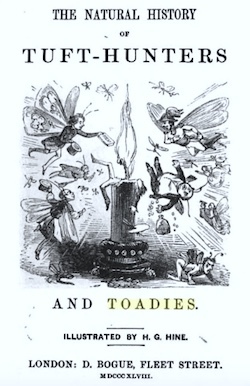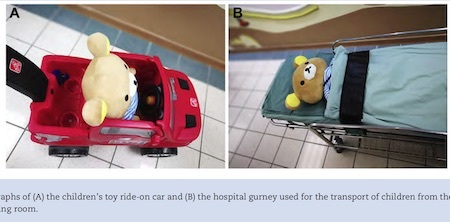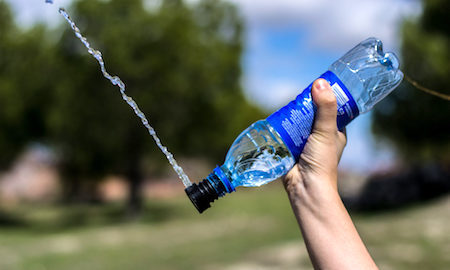Marc Abrahams's Blog, page 175
August 13, 2018
One month from today: the 28th First Annual Ig Nobel Prize Ceremony
The 28th First Annual Ig Nobel Prize ceremony happens on Thursday evening, September 13, in Sanders Theatre, Harvard University.
Ten new winners will be awarded Ig Nobel Prizes, for achievements that make people LAUGH, then THINK. The ceremony will include the premiere of “The Broken Heart Opera.”
A few tickets to the ceremony are still available. The event will be webcast live.
Details are on the ceremony web page.

Hydroplaning Eider Ducks – the math(s)

Ducks can fly. Ducks can swim. And, unusually, they’re pretty good at something in between – viz. hydroplaning (a.k.a. ‘Skeetering’). If you’ve seen them doing it, you might have wondered about the physics (and math(s)) behind it. In which case, you are not alone …
“Common eiders (Somateria mollissima) are heavy sea-ducks that spend a large portion of their time swimming at the water surface. Surface swimming generates a bow and hull wave that can constructively interfere and produce wave drag. The speed at which the wavelengths of these waves equal the waterline length of the swimming animal is the hull speed. To increase surface swimming speed beyond the hull speed, an animal must overtake the bow wave. This study found two distinct behaviors that eider ducks used to exceed the hull speed: (1) “steaming,” which involved rapid oaring with the wings to propel the duck along the surface of the water, and (2) “paddle-assisted flying,” during which the ducks lifted their bodies out of the water and used their hind feet to paddle against the surface while flapping their wings in the air.”
A mathematical formula which goes some way in describing the phenomena is proposed by the research team behind the paper : Aquatic Burst Locomotion by Hydroplaning and Paddling in Common Eiders (Somateria mollissima) Journal of Experimental Biology, 218: 1632-1638.

August 12, 2018
Bunny Facial Features Cuteness Survey
Naomi Harvey and colleagues at and around the University of Nottingham and Nottingham Trent University are collecting opinions about bunny cuteness. They invite anyone who has such opinions to take their Rabbit Facial Features Survey:
The aim of this study is to assess people’s preference for rabbit facial features, to help us gain an understanding of how these features influence how appealing a rabbit is to a potential owner.
This survey will ask you to rate images of 25 rabbits on how appealing they are to you, and should take 10 minutes to complete. We will not ask for your name, email or any identifiable information, and all data you provide will be provided anonymously for the purpose of research only.
(Thanks to our friends at QI for bringing this to our attention.)

An old book about toadies
Toadies—people who suck up to high-status persons no matter how nastily those high-status persons treat them—are something new to our species. Here’s evidence (as if you need further evidence) that they’ve been around for generations. The satirical book The Natural History of Tuft-hunters and Toadies, by Theodore Alois Buckley, was published by D. Bogue, in 1848.
Theodore Alois Buckley became famous for translating ancient literary works, including The Odyssey—into the English language.
BONUS: We have seen mention of, but have not managed to find a copy of, this study: “Flattery and compliance with a direct request: Towards a theory of toady influence,” A.R. Pratkanis and C. J. Abbott, Unpublished manuscript. University of California, Santa Cruz (2011). It would be delightful to learn whether the study exists.

August 11, 2018
Toy-Car-Ride Versus Drugging [Medical Experiment on Children]
What’s the least-worst way to prevent young kids from becoming jittery as they are about to have surgery? This new experiment plays with that question:
“The Effectiveness of Transport in a Toy Car for Reducing Preoperative Anxiety in Preschool Children: A Randomised Controlled Prospective Trial,” P.P. Liu, Y. Sun, C. Wu, W.H. Xu, R.D. Zhang, J.J. Zheng, Y. Huang, Y.Q. Chen, M.Z. Zhang, and J.Z. Wu, British Journal of Anaesthesia, vol. 121, no. 2, August 2018, pp. 438-444. The authors, at Shanghai Jiao Tong University, Shanghai, China, and the Cincinnati Children’s Hospital Medical Center, USA, explain:
This study was designed to determine whether transport of a paediatric inpatient in a children’s ride-on toy car has an effect on perioperative levels of anxiety compared with transport on a hospital gurney with or without oral midazolam premedication….
108 children aged 2–5 yr with congenital heart disease and undergoing first surgical correction were randomly allocated to one of three groups: Group C (transport in a children’s ride-on car), Group G (transport on a gurney without premedication), or Group M (transport on a gurney and received premedication of oral midazolam 0.5 mg kg−1)….
Three categories of interventions have been used to reduce preoperative anxiety: sedatives premedication, parental presence during induction of anaesthesia, and hospital-based preoperative preparation programs. Midazolam premedication is regarded as a reliable strategy in reducing preoperative anxiety, but it can be associated with a number of untoward consequences, such as paradoxical reaction, delayed patient discharge in ultrashort procedures, and some operational drawbacks.7 Parental presence with the child until the completion of anaesthesia inhalation induction is popular in the UK and USA, and it increases the parents’ satisfaction and the child’s cooperation. But clinically, it is less practical in overpopulated Asian countries….
Conclusions—Transport in a ride-on toy car can relieve preoperative anxiety in preschool children undergoing surgery to a comparable degree as midazolam.
BONUS QUESTION (unrelated): What is the horsepower of a toy car?

Tardigrades on Far-Off Planets, Measuredly, Theoretically [research study]
One can rate far-off planets by their cosiness—especially the extremes, good or bad, of coziness—as homes or potential homes to tardigrades. That’s what this study tries to do:
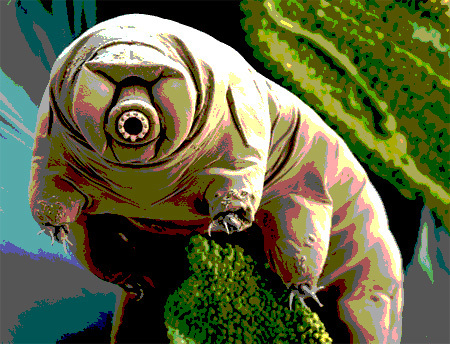
“Tardigrade Indexing Approach on Exoplanets,” Madhu Kashyap Jagadeesh, Milena Roszkowska, and Łukasz Kaczmarek, Life Science in Space Research, epub 2018. The authors, at Jyoti Nivas College, India, and Adam Mickiewicz University, Poland, explain:
“Finding life on other worlds is a fascinating area of astrobiology and planetary sciences. Presently, over 3800 exoplanets, representing a very wide range of physical and chemical environments, are known. Scientists are not only looking for traces of life outside Earth, but they are also trying to find out which of Earth’s known organisms (ex: tardigrades (water bears)) would be able to survive on other planets. In our study, we have established a metric tool for distinguishing the potential survivability of active and cryptobiotic tardigrades on rocky-water and water-gas planets in our solar system and exoplanets.”

August 10, 2018
Maybe Evolutionary Psychology
Here is an essay for use by evolutionary psychologists. Written by Alice Shirell Kaswell, its title is “Maybe—Evolutionary Psychology.”
Maybe—Evolutionary Psychology
by Alice Shirrell Kaswell, Improbable Research staff
Maybe maybe maybe maybe maybe?
Maybe maybe maybe maybe maybe maybe maybe maybe maybe maybe maybe maybe maybe maybe maybe maybe maybe maybe maybe maybe maybe maybe maybe maybe. Maybe maybe maybe maybe. Maybe maybe maybe maybe maybe maybe maybe maybe maybe maybe maybe, maybe maybe maybe.
Maybe, maybe maybe maybe maybe maybe maybe maybe maybe maybe maybe maybe. Maybe maybe maybe maybe maybe maybe maybe (maybe maybe maybe, maybe maybe) maybe maybe maybe.
Maybe maybe maybe maybe maybe maybe maybe maybe maybe maybe maybe maybe maybe maybe.
Maybe maybe maybe maybe maybe maybe. Maybe maybe maybe maybe maybe maybe maybe maybe maybe maybe maybe maybe maybe maybe maybe maybe maybe maybe. Maybe maybe maybe maybe maybe. maybe maybe maybe maybe maybe maybe maybe maybe maybe maybe maybe maybe maybe maybe maybe maybe maybe maybe maybe.
Maybe maybe maybe maybe maybe maybe—maybe maybe maybe maybe maybe maybe maybe maybe—maybe maybe maybe maybe maybe maybe maybe maybe maybe maybe.
Maybe maybe maybe. Maybe maybe maybe maybe maybe, maybe maybe maybe maybe maybe maybe maybe maybe maybe maybe, maybe maybe maybe maybe maybe maybe. Maybe maybe maybe maybe maybe, maybe maybe. Maybe maybe maybe maybe maybe maybe maybe maybe maybe maybe maybe maybe maybe maybe maybe maybe maybe.
Maybe maybe maybe maybe maybe maybe maybe maybe; maybe maybe maybe maybe maybe maybe maybe maybe maybe maybe maybe maybe maybe maybe maybe maybe.
Maybe maybe maybe maybe maybe maybe maybe maybe maybe maybe maybe maybe maybe maybe: maybe maybe; maybe maybe; maybe maybe maybe maybe; maybe maybe.
Maybe maybe.
This essay was inspired in part by Doug Zonker’s classic treatise “Chicken Chicken Chicken,” and in part by the field of evolutionary psychology. It is, maybe, excerpted from Alice Shirell Kaswell’s book (now in prep) called Maybe—Evolutionary Psychology.

August 9, 2018
Sizes of cash prizes for science awards (up to $ ten trillion)
ABC News compared the amount of money given to various prize winners. Their report bears the headline “Chart of the day: How cash prizes for prestigious science awards stack up against reality television winners.” They include this remark:
But spare a thought for those who receive Ig Nobel Prizes. The awards — honouring achievements that make you laugh, then think — came with 10 trillion Zimbabwe dollars.
This is the chart ABC prepared: This is a picture of a ten trillion dollar bill:
This is a picture of a ten trillion dollar bill:

Automated password generation of offensive expressions
The UK’s National Health Service (NHS) offers users an online ‘Choose and Book’ service for making appointments. When a user creates an account, the software automatically creates a two word passphrase – but not everyone is happy. Professor Simon de Lusignan MSc MD FBCS CITP FRCGP for instance (currently Professor of Primary Care & Clinical Informatics / Chair in Health Care Management / Head of the Department of Clinical and Experimental Medicine at the University of Surrey, UK) cites an example provided by a patient :
“The two words generated for this patient were ‘Poppy’ and ‘Cock’. The patients felt this was offensive and complained. ‘Poppycock’ means nonsense or rubbish and is generally used as an expletive. It was first recorded in the mid-19th century in America. It was thought by some to derive from the Dutch word for soft faeces ‘PappekaK’ though the authenticity of this is challenged. Instead it is more likely to be derived from the Dutch expression: ‘Zo fijn als gemalen poppekak’, – used to imply excessive religious zeal; but literally translated meaning ‘As fine as powdered doll s**t’ “
See: Automated password generation of offensive expressions: Choose and Book and Poppycock Informatics in Primary Care,16:241–2
Note: The professor’s observation is now ten years old. Is the Choose and Book service still generating inappropriate passphrases? If you have been assigned one, please get in touch.

Inventiveness: “The portable bidet compatible with your plastic bottle”
“The portable bidet compatible with your plastic bottle”—that’s what the promoters say in promoting their invention called CuloClean. It’s a propulsive bottle cap. The promotional video and crowdfunding campaign, like the device itself, comes with minimal information.
You may find it tricky to flush out information about the people behind CuloClean. Their press kit says only this: “This is Ana and Guillermo, two young engineers from Madrid (Spain) concerned about the environment and willing to offer an efficient, reusable, discreet and cheap solution to everyone’s intimate hygiene.”
Their materials make the claim “there hasn’t been until now an actual discreet, portable bidet that can fit in a pocket.” Here is a promotional photo-spread showing the device viewed from three different vantage points: (Thanks to Ig Nobel Prize winner Lluis Pallarés, co-inventor of Babypod, the device that delivers vagina music to pregnant women, for bringing CuloClean to our attention.)
(Thanks to Ig Nobel Prize winner Lluis Pallarés, co-inventor of Babypod, the device that delivers vagina music to pregnant women, for bringing CuloClean to our attention.)

Marc Abrahams's Blog
- Marc Abrahams's profile
- 14 followers




